How I painted Nellie
News Posted: 16 June 2020
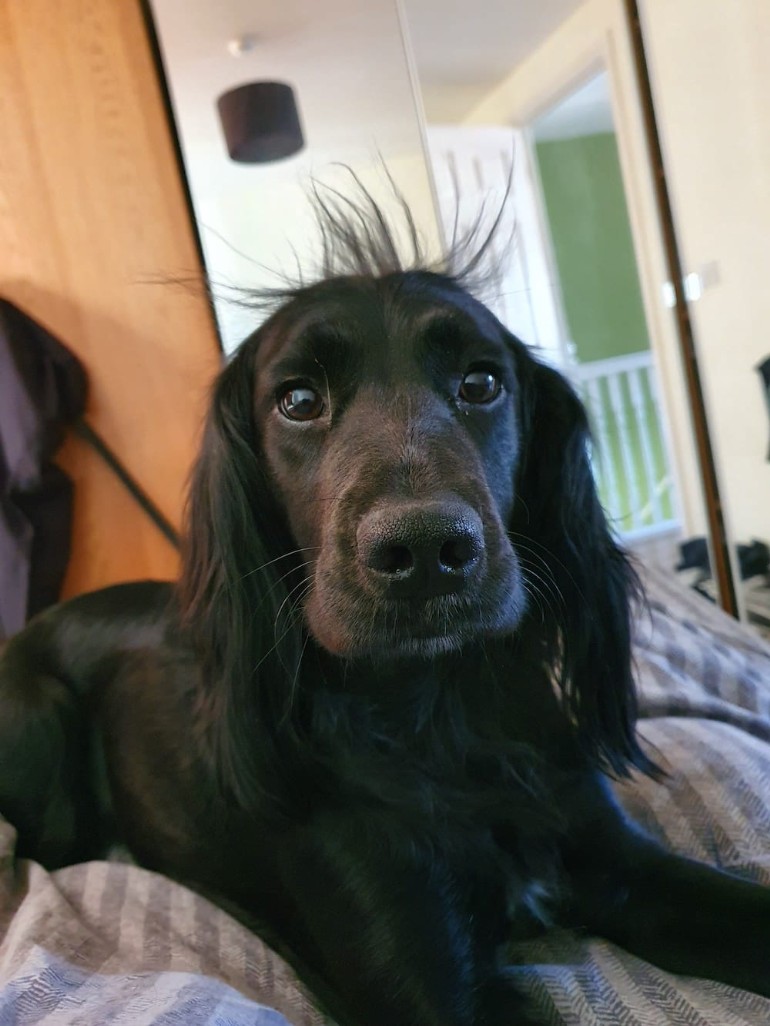
For this watercolour painting of Nellie I picked out the most promising and sharpest digital image from a selection that I had received by email from the client. A little photo editing was required in order to achieve the most detailed image possible. I decided to use Arches cold pressed 140lb watercolour paper as it is cotton based with a medium texture, which I have found to be a highly suitable surface for the depiction of fur and large areas of hair, along with being robust enough to handle the several layers of wash required to build up the deep lustre of Nellie’s coat.
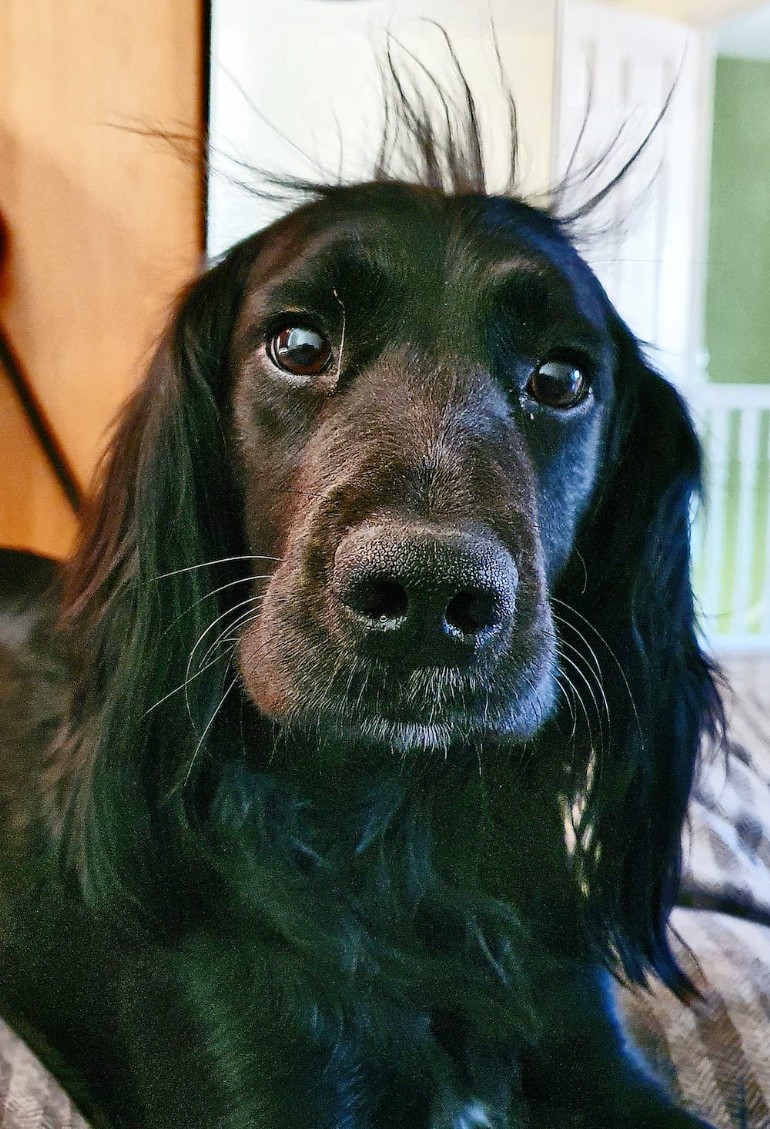
I then followed my usual routine of making a preliminary sketch on plain, white paper, which I gradually refined into a detailed line drawing once I was happy that it was correctly proportioned. From there I proceeded to carefully transfer my preliminary drawing onto the Arches paper, making constant reference to the selected image on my laptop screen. The judicious dabbing and rolling of a smallish lump of putty eraser allowed me to selectively lighten areas of line that I felt were too heavy. By using this method, I was able to produce a lightly detailed drawing that would not be overtly visible in the completed work but which would allow me to maintain accuracy and proportion throughout those vital early stages. Once I was happy with the results I then proceeded on to the next stage.
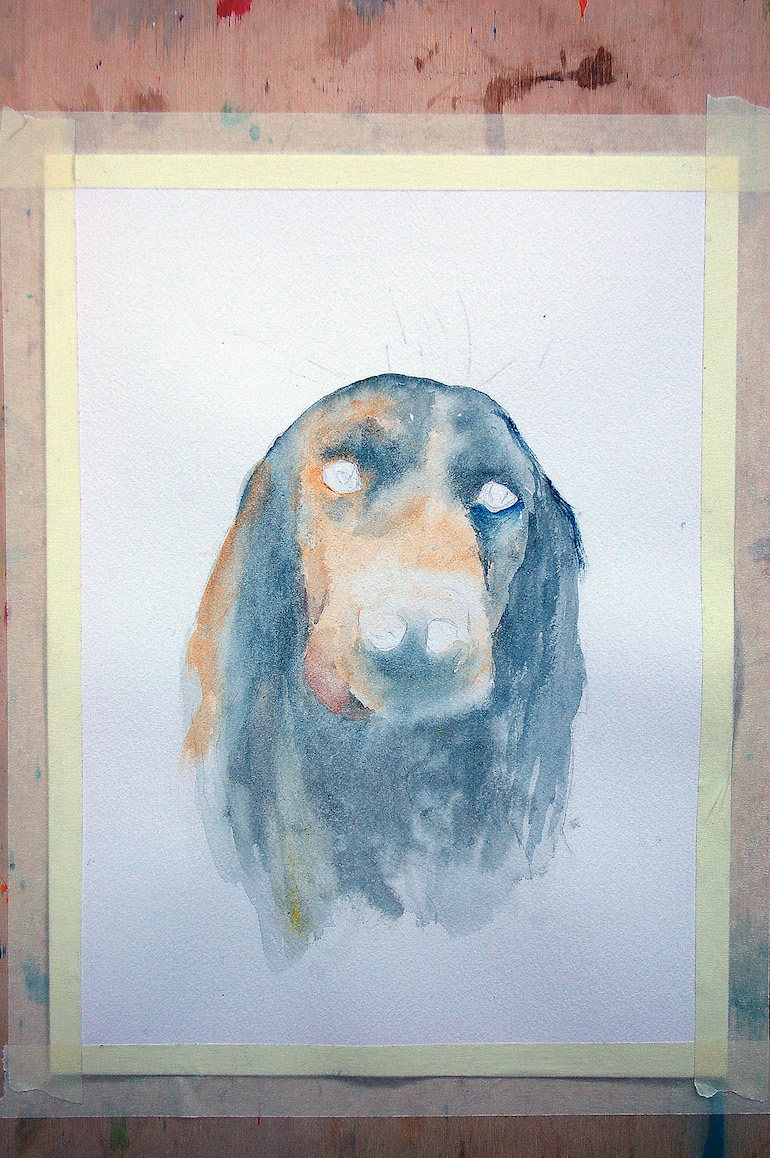
I always find the initial washes on any watercolour painting to be a daunting prospect. The wet-in-wet technique can be very tricky indeed to master, requiring fast, constant working in order to prevent hard edges from forming between transitions of dry and wet areas. ‘Blooming’ is another potential problem, whereby the dried medium takes on the appearance of cauliflower. Replicating the smoothness of human skin tones in a realistic manner through the use of watercolour washes can prove to be extremely difficult. Fortunately, animal fur and hair is slightly easier, as subsequent layers of colour, tone and detail will tend to mitigate any less than perfect early washes. As watercolour is a particularly unforgiving medium, I often find that staying within the lines and preserving the integrity of the drawing can be challenging, regardless of the subject that I might happen to be working on.
After having taped the paper to my drawing board, in order to keep it securely in place and to help in minimalising the occurrence of buckling, I proceeded to apply the first wash with the intention of establishing areas of light and dark tones before adding washes that were somewhat deeper in hue and tone than I might normally have made use of. Another departure from my usual procedure at this stage was the use of acrylic paints diluted to the consistency of watercolour wash. The purpose for this being that, due to the polymer used in its formation, acrylic paint is water fast when dried, unlike watercolour which can be reactivated by subsequent washes. This allowed me to be bolder than might otherwise have been possible when applying the early washes
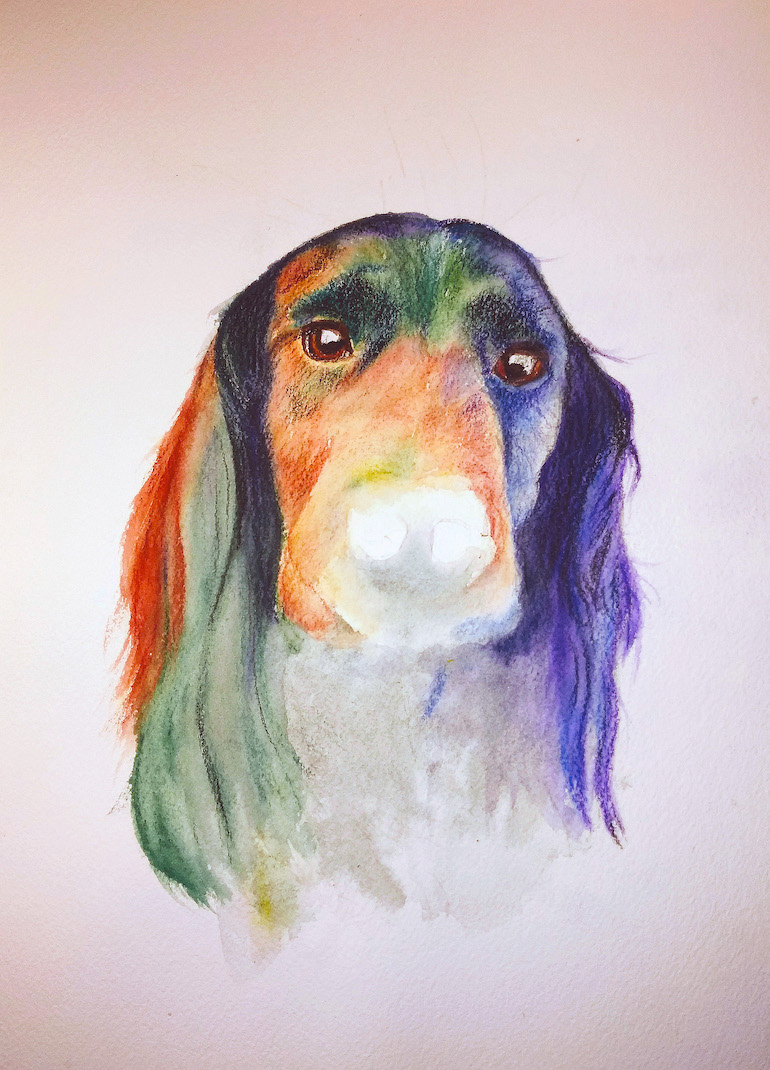
There is always an ugly stage to any watercolour portrait painting and this was definitely that stage for me. The colours that I had laid down after the initial wash felt completely overwhelming but I persevered in the knowledge that everything would come together in the proceeding stages and that this ugly stage was a vital element of the finished picture. Without it I would have been unable to recreate Nellie’s image in the manner that I had envisioned.
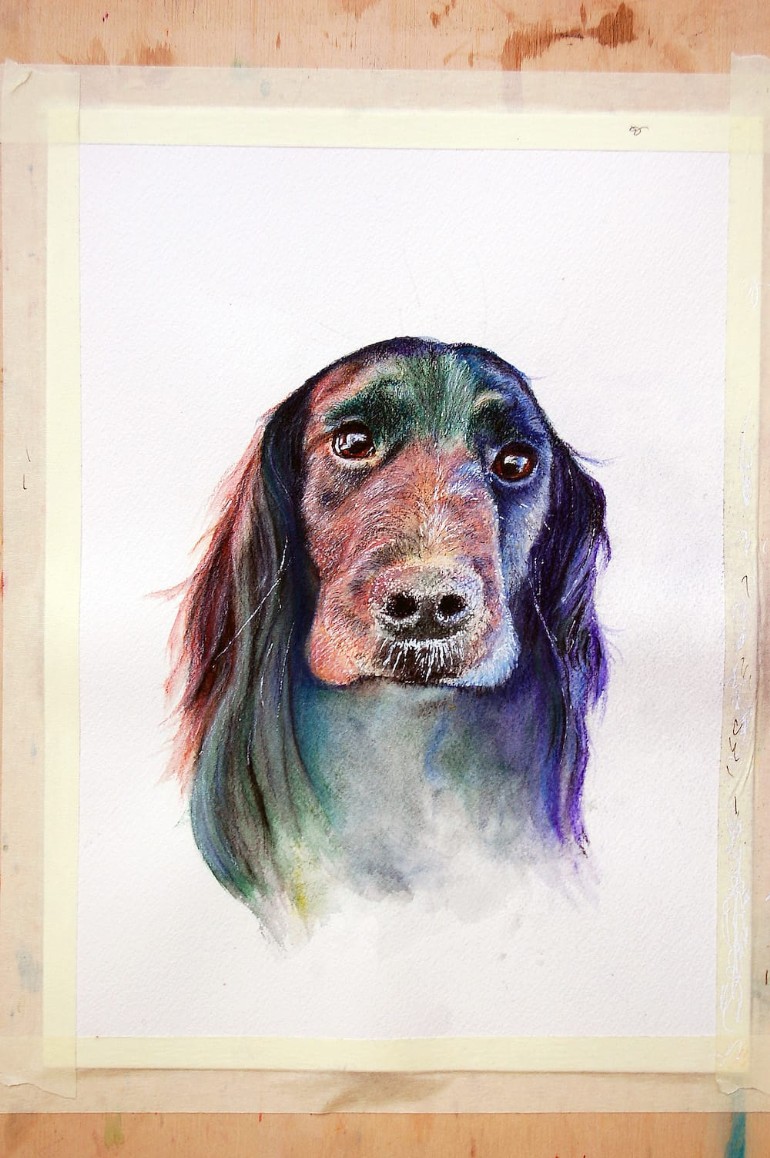
I am a big fan of watercolour pencils and never more so than when depicting fur and hair. They are perfect for my needs during the middle and latter stages of an animal portrait. These pencils allow for much finer control, as the pigment is laid down dry and then activated with a wet brush. In the latter stages of a piece it is possible to leave the pigment dry, as one would with ordinary colouring pencils, although the quality and sharpness of lines will be diminished. When using watercolour pencils it is very important that the paper is completely dry in order to avoid harsh marks and damage to the surface. For this picture, I made extensive use of these pencils in order to both build up the detail in Nellie’s coat and to add depth and lustre at the same time.
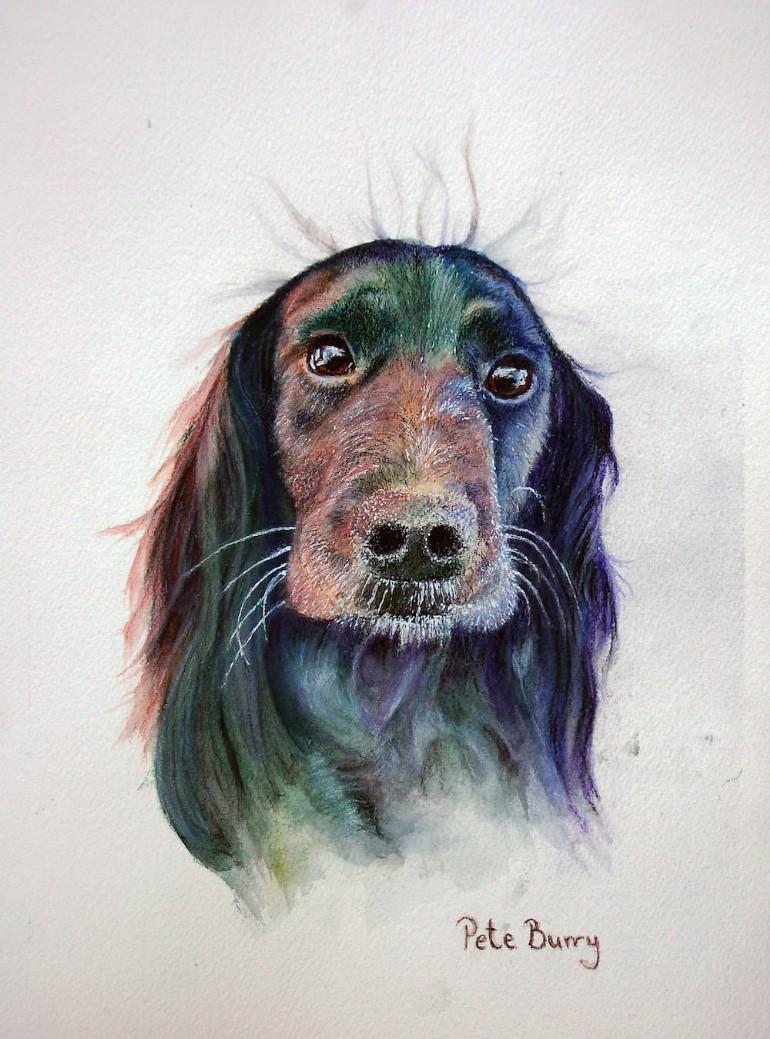
At the outset of the painting I had intended to only include Nellie’s head and neck and to simply use the plain white of the paper as a background. However, I didn’t feel satisfied that the work looked finished and so decided to add more of her body along with a very soft background. Upon completion I was very happy that I had decided to do so and very pleased with the results. The client was also extremely happy with my efforts, which is always a wonderful moment for me, particularly if they happen to live locally and I get to present the completed work to them in person.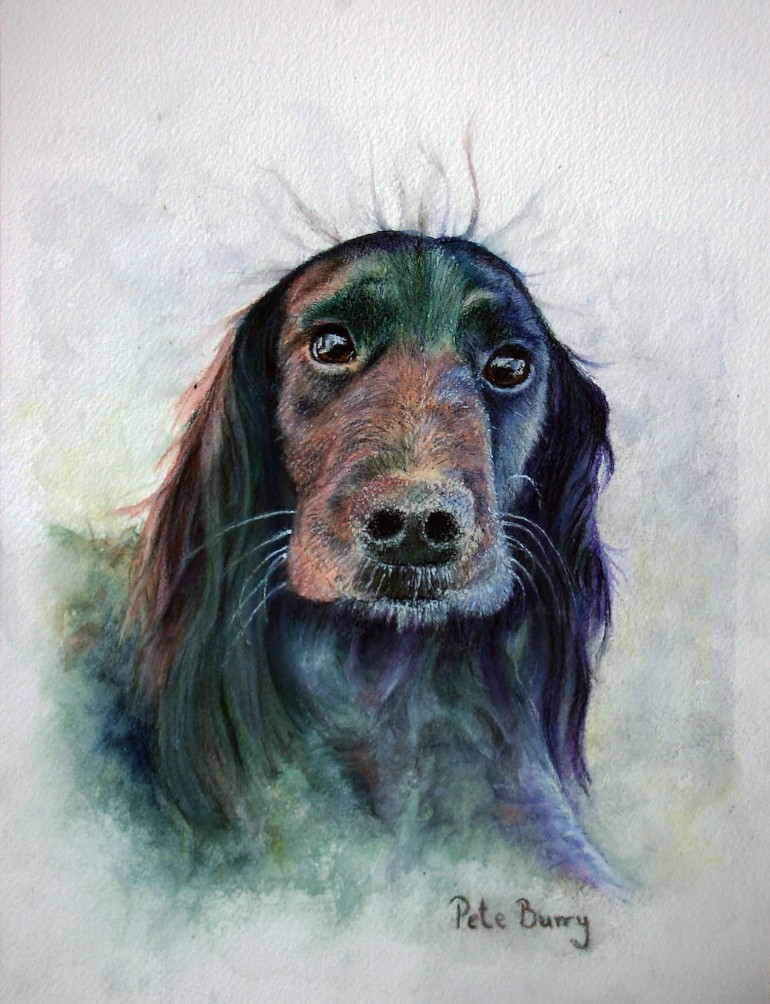
Commissions
If you would like to commission me for any work please get in touch.
Comments are closed on this post.
Tagged with: #Animals #Dog #Watercolours #Pet